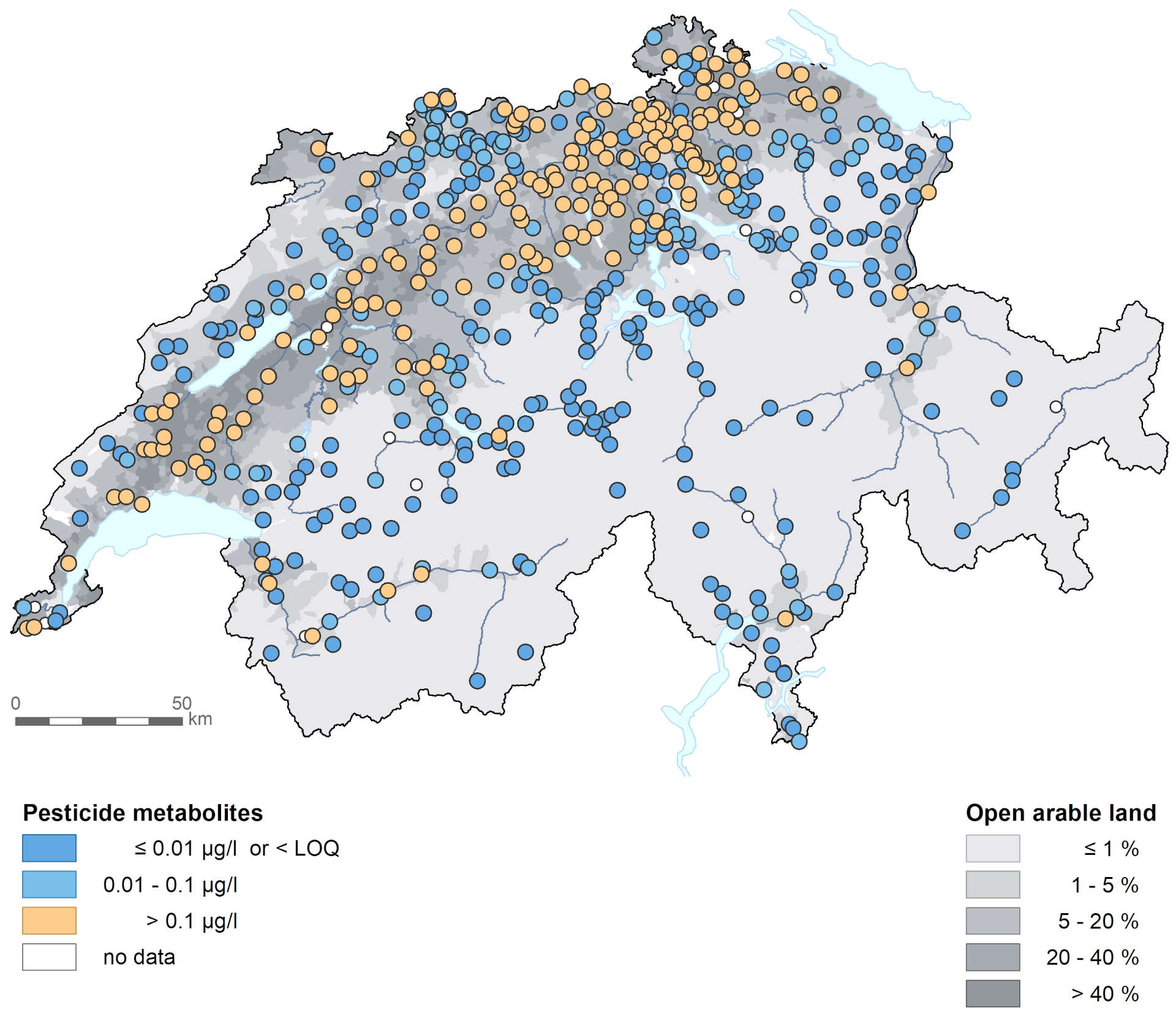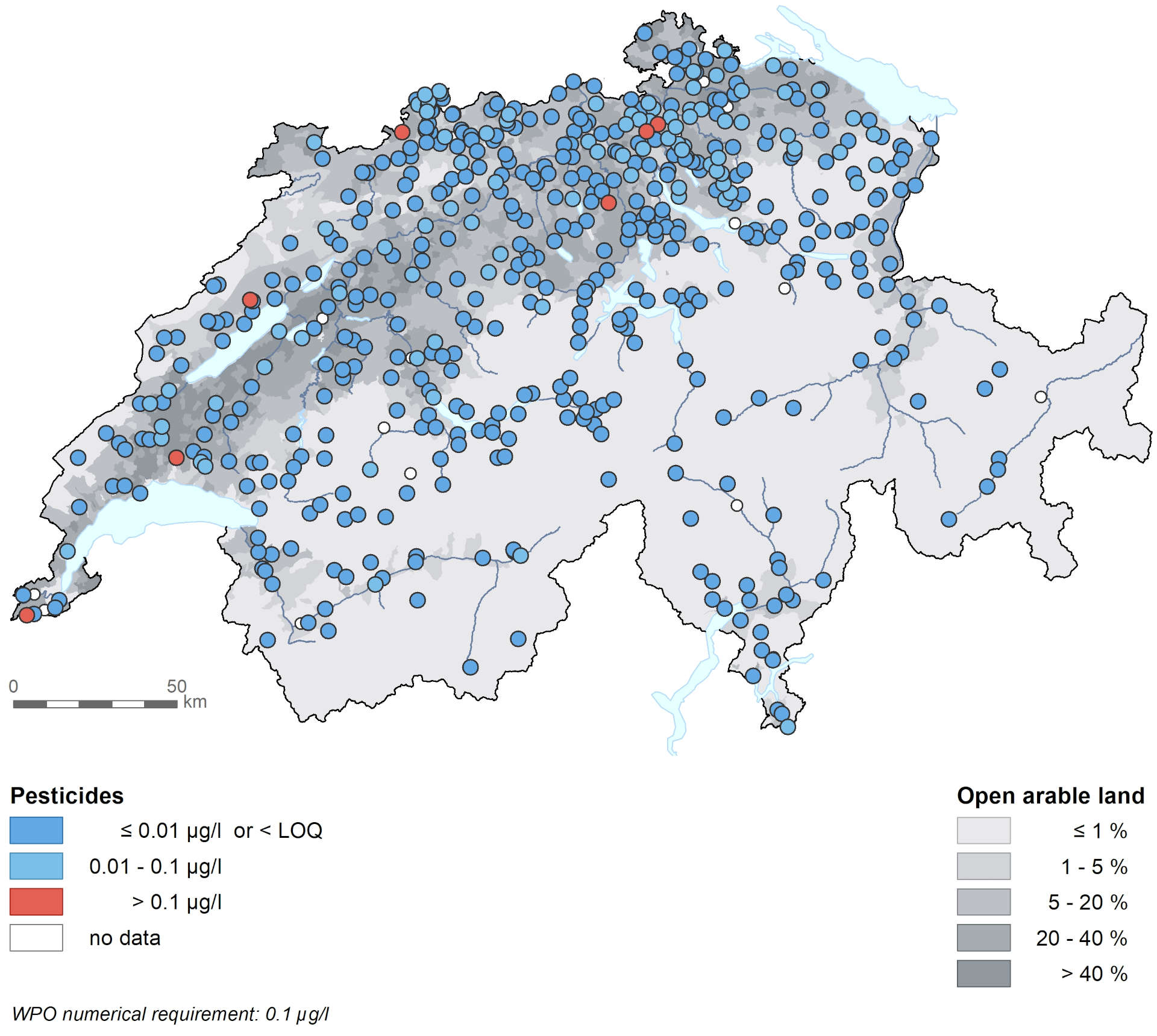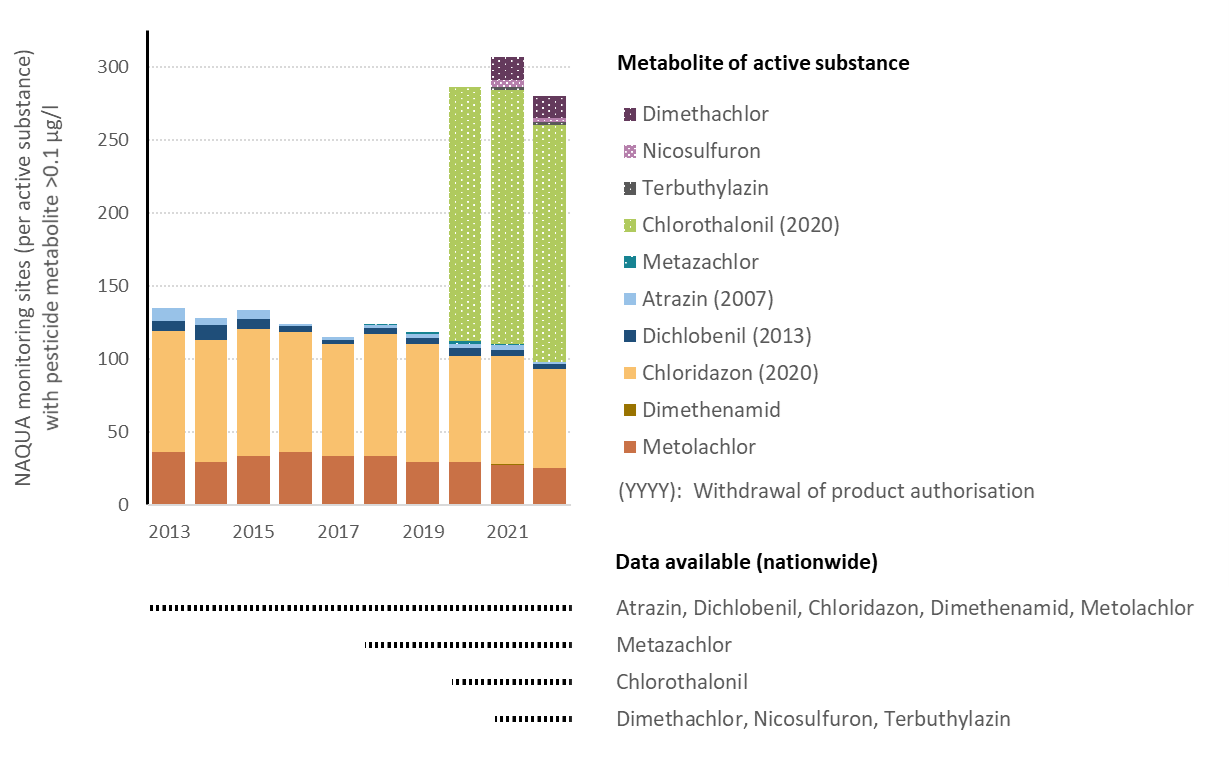Pesticides exceed the limit value of 0.1 micrograms per litre at 1 to 2% of monitoring sites every year. In addition, pesticide degradation products (known as metabolites) occur in concentrations of more than 0.1 micrograms per litre at one in three groundwater monitoring sites across Switzerland. Metabolites significantly impair the quality of groundwater, particularly on the Swiss Plateau.
Under the Waters Protection Ordinance (WPO), groundwater should generally not contain any persistent synthetic substances. For groundwater used for drinking water or intended for such use, there is also a limit value ('numerical requirement') of 0.1 micrograms per litre (µg/l) for pesticides. In addition, the groundwater – after basic treatment, where appropriate – must meet the requirements of legislation on foodstuffs. This legislation also prescribes a maximum value of 0.1 µg/l for pesticide metabolites classified as relevant for drinking water in the authorisation procedure.
Pesticides exceed the limit value at 1 to 2% of the NAQUA National Groundwater Monitoring sites per year. This percentage has remained largely unchanged for more than 10 years. In recent years, elevated concentrations were mostly due to bentazone. Groundwater resources in karst areas of the Jura are particularly sensitive to pesticide pollution, where these substances can exceed the limit value for a short time, but in some cases substantially.
Metabolites are widespread
In intensively used agricultural areas, metabolites, i.e. pesticide degradation products, are widespread and regularly detected in concentrations of more than 0.1 μg/l. On the Swiss Plateau, metabolites exceed the value of 0.1 μg/l at more than 60% of monitoring sites. Nationwide, every third NAQUA monitoring site is affected.
A total of 21 metabolites of 12 active substances currently exceed the value of 0.1 μg/l.
Metabolites of the fungicide chlorothalonil are particularly widespread in groundwater. In arable farming areas, they occur at 80% of measuringthe monitoring sites points in concentrations above 0.1 μg/lexceed the value of 0.1μg/l at more than 80% of monitoring sites. Throughout the country, every third monitoring site is affected.
Metabolites of the herbicides chloridazon and metolachlor also exceed the value of 0.1 μg/l both repeatedly and widely. The metabolites of chloridazon occurred in elevated concentrations at 13 to 16% of the monitoring sites per year over the last 5 years, the metabolites of metolachlor at 5 to 6% of the monitoring sites.
The metabolites of dimethachlor, for which a nationwide analysis was launched in 2021, also affect groundwater quality at numerous monitoring sites. They exceed the value of 0.1 μg/l at 3% of monitoring sites at a national scale.
In recent years, the concentrations of the metabolites of atrazine and dichlobenil have slowly decreased. The reason for this is the ban on these pesticides in 2007 and 2013 respectively. In 2020, the authorisation for chloridazon was also withdrawn and the use of chlorothalonil was banned. Since 2023, farms receiving direct payments under the Proof of Ecological Performance (PEP), are only allowed to use metolachlor and dimethachlor in exceptional cases, i.e. with special authorisation.
Further information
Documents
These publications do not exist in English. They are available in other languages.
-
Zustand und Entwicklung Grundwasser SchweizThis publication does not exist in English. It is available in other languages.
Priorisierung PSM-Metaboliten. Auswahl der Pflanzenschutzmittel-Metaboliten für das NAQUA-Monitoring im Grundwasser. (PDF, 940 kB, 09.12.2022)Artikel in "Aqua & Gas" Nr. 12/2022.
Pflanzenschutzmittel-Metaboliten im Grundwasser (PDF, 2 MB, 29.11.2019)Ergebnisse aus der NAQUA-Pilotstudie "Screening". Artikel in "Aqua & Gas" Nr. 11/2019.
Monitoring von PSM-Rückständen im Grundwasser (PDF, 7 MB, 30.06.2017)Zahlen und Fakten der Nationalen Grundwasser-Beobachtung NAQUA. Artikel in "Aqua & Gas" Nr. 6/2017.
Last modification 09.12.2022









